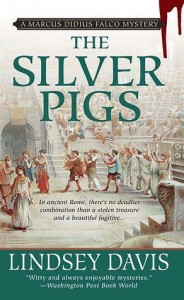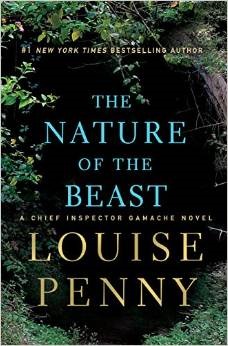 Format read: ebook provided by the publisher via Edelweiss
Format read: ebook provided by the publisher via EdelweissFormats available: hardcover, ebook, audiobook
Genre: mystery
Series: Chief Inspector Gamache #11
Length: 384 pages
Publisher: Minotaur Books
Date Released: August 25, 2015
Purchasing Info: Author’s Website, Publisher’s Website, Goodreads, Amazon, Barnes & Noble, Kobo, Book Depository
Hardly a day goes by when nine year old Laurent Lepage doesn’t cry wolf. From alien invasions, to walking trees, to winged beasts in the woods, to dinosaurs spotted in the village of Three Pines, his tales are so extraordinary no one can possibly believe him. Including Armand and Reine-Marie Gamache, who now live in the little Quebec village.
But when the boy disappears the villagers are faced with the possibility that one of his tall tales might have been true.
And so begins a frantic search for the boy and the truth. What they uncover deep in the forest sets off a sequence of events that leads to murder, leads to an old crime, leads to an old betrayal. Leads right to the door of an old poet.And now it is now, writes Ruth Zardo. And the dark thing is here.
A monster once visited Three Pines. And put down deep roots. And now, Ruth knows, it is back.Armand Gamache, the former head of homicide for the Sûreté du Québec, must face the possibility that, in not believing the boy, he himself played a terrible part in what happens next.
My Review:
As much as I love this series, and all the characters in it, I would not want to live in Three Pines. Quebec. The murder rate is much too high. I can see the tourist brochures now – Come to Three Pines if you’re tired of your life. With the subtext that your life will probably end if you go there.
The regulars all survive. Often not unscathed, but survive. This is a place that people come to for sanctuary, and often stay. Providing they survive their initial introduction.
For a story that starts small, The Nature of the Beast brings in a wider and wider world, even though its entire physical setting is that one small village in Quebec.
We start with one myth, the boy who cried wolf, and end with another, the Whore of Babylon. While that seems like quite a stretch, the path from one to another ultimately becomes clear, even as it obscures who is responsible for the evils that rain down on this place.
A little boy loves to roam the woods around Three Pines, and make up stories about the monsters he finds. Laurent Lepage is not just very imaginative, he’s also an excellent salesperson – he does all too good a job at getting people to believe his fantastic tales. But Laurent has been doing this since he was 6, and at age 9 people are generally wise to him. So when he bursts into the local Bistro claiming that he found a gun bigger than his house with a monster on it, no one believes.
And, just as in the fable about the boy who cried wolf, this time he is telling the truth. And it gets him killed.
Three Pines has been hiding a terrible secret. 40 years ago an arms dealer, a genius engineer, and a serial killer built a gigantic gun in the woods near Three Pines. Over time, the arms dealer was murdered, the engineer died, and the serial killer got caught. But the gun remained under camouflage netting until poor little Laurent found it, and touched off a series of murders, a witch hunt, and very nearly a prison break.
Chief Inspector Gamache, formerly of the Surete du Quebec, has retired with his wife Reine-Marie to the village of Three Pines. He became famous for rooting out the long-standing corruption in the Surete, and retired or perhaps retreated, to Three Pines to heal.
But murder, and his past, keep finding him. He is the first to think that Laurent did not die in a bicycle accident, but was murdered. And it is he that starts the search for the boy’s trail, and discovers the gun known in the arms trade as Big Babylon.
This Supergun was purported to be able to shoot a payload into low-earth-orbit using mechanical energy only – no electronics. The aiming, however was so imprecise that it could only be used on a very big target, like a city. It is a weapon of mass destruction, and the rumors said that it was purchased by Saddam Hussein. Luckily, he never got it.
During the story I kept wondering if the reason that the image of the Whore of Babylon was etched onto the gun’s base was for Saddam’s benefit. The reason turns out to be much more chilling than I imagined.
The discovery of the gun brings a host of interested parties to Three Pines. Laurent’s death has already brought Gamache’s former colleagues to the village. Isabelle Lacoste is now Chief of Homicide, Gamache’s old position, and Jean-Guy Beauvoir, originally Gamache’s second, is now hers. They are there for the murder.
Following in their wake are a retired physics professor and finally, two agents of the Canadian Security Service. The professor knew the arms dealer, and the Security Officers claim to be paper pushers who just so happen to be experts in the arms dealer, and especially in the Supergun he planned to sell. Or sold.
After a second death, both investigations heat up, and go at cross purposes. This is a case where everyone has secrets, and everyone’s secrets get in the way of anyone else finding the truth. They are all going in circles, and they all suspect each other of agendas that may not be for the greater good.
Into the middle of it all, a bigger threat than anyone imagined. The one person left alive who might know the truth of the whole mess is a convicted serial killer, locked in maximum security for a series of murders so heinous that his trial was kept secret. Gamache is the only person who knows who the man really is or just how much he has done.
The question facing the retired Chief is a terrible one – will the world be better off with a soulless serial killer on the loose but the plans for the doomsday gun found and safe, or will it be better to keep the devil locked up and let the world hunt for the Supergun plans throughout Three Pines, with all the chaos and destruction that will cause?
Which is the greater good?
Escape Rating A+: This one kept me up until 3 am. I had to finish. And as usual with this series, it’s the way that events affect the people involved that stick with me, and not necessarily the case itself.
This is also a case that fools the reader, as well as the detectives, right up to the end. The story starts with “Who killed Laurent?” but we and the detectives all get so sidetracked by the Supergun that we lose sight of the dead boy. We all think we know the motive for his murder (and the one that follows) but no one seems to fit the frame for the murderer.
The tie to the serial killer seems to come from left field. At first, the detectives think that Gamache is grasping at straws when he brings the man’s name into the investigation. At the end, of course, he’s right. He’s always right in the end, no matter how many times he seems to go off course in the middle. And this course looked very far fetched when it is first introduced. It’s only at the end where we discover just how deliberate this particular piece of misdirection was.
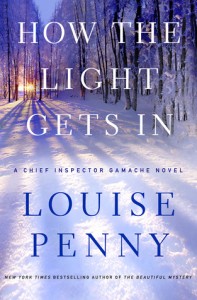 And through the entire story range the people of Three Pines. By this point in the series, we know them and love them – even the cantankerously nasty poet Ruth Zardo and her duck Rosa. It is Ruth that is both shielding the present from the awful past, and who provides the insights that make the solution possible. And it’s Ruth who provides a surprising amount of compassionate healing to those who are left needing it most. Just as she did with Jean-Guy at the end of How The Light Gets In (enthusiastically reviewed here)
And through the entire story range the people of Three Pines. By this point in the series, we know them and love them – even the cantankerously nasty poet Ruth Zardo and her duck Rosa. It is Ruth that is both shielding the present from the awful past, and who provides the insights that make the solution possible. And it’s Ruth who provides a surprising amount of compassionate healing to those who are left needing it most. Just as she did with Jean-Guy at the end of How The Light Gets In (enthusiastically reviewed here)
The part of the story that is sticking with me are the open questions that are left at the end. Gamache has healed enough that he needs to find a second act for his life. He’s not yet 60, and there is plenty of time for him to leave his mark again in some other service. He still feels the need to fight injustice, right wrongs and solve murders. There are plenty of places begging for him to come and lead them.
At the same time, the serial killer is a manipulative murdering bastard who is looking for a way out of prison and back into the world where he can commit more sick crimes. He knows Gamache’s name, and obviously spends his life planning his next action. Or evisceration. I have a feeling that he will (unfortunately for Gamache) be back.
And then there’s the Supergun, and everything it brought with it. It’s not just that the behemoth is out there in the woods, it’s that there are now members of the illegal arms trading community who know where it is and where to look for information on it. Some of those completely unscrupulous people know that Gamache and his colleagues thwarted them this time, and there’s a chance they’ll want payback.
But the big questions are the hard ones. Do the ends justify the means? Do the needs of the many outweigh the needs of the few, or of the one? And if they do, who decides which are which? And last, particularly in regards to the security community – Who watches the watchers?
Those are the questions that haunt Gamache at the end of this book, and I expect will play a big part of the next. They are certainly haunting me.

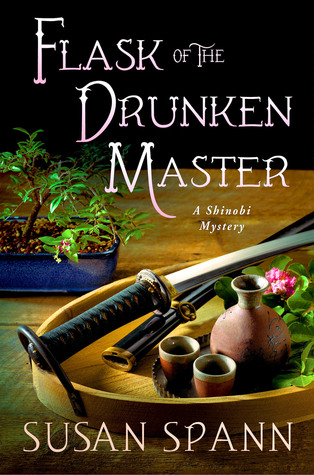




 The Long Way Home is a marvelously told character-study wrapped around the mystery of one man’s disappearance into the wilds of Quebec, and his own past. The story richly rewards those who have followed Inspector Gamache and the inhabitants of Three Pines from the beginning of his journey in
The Long Way Home is a marvelously told character-study wrapped around the mystery of one man’s disappearance into the wilds of Quebec, and his own past. The story richly rewards those who have followed Inspector Gamache and the inhabitants of Three Pines from the beginning of his journey in 
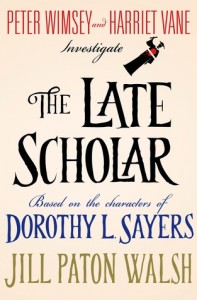
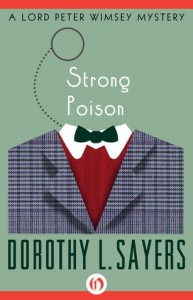 Escape Rating A-: In the first Lord Peter and Harriet Vane story, Harriet tells Peter that he has a great talent for “talking piffle”, which he still does, and charmingly so. But he no longer presents himself as a lightweight, even though he does try to conceal his past as a private detective as long as possible.
Escape Rating A-: In the first Lord Peter and Harriet Vane story, Harriet tells Peter that he has a great talent for “talking piffle”, which he still does, and charmingly so. But he no longer presents himself as a lightweight, even though he does try to conceal his past as a private detective as long as possible.

